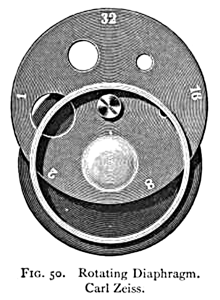Related Research Articles

Roman numerals are a numeral system that originated in ancient Rome and remained the usual way of writing numbers throughout Europe well into the Late Middle Ages. Numbers are written with combinations of letters from the Latin alphabet, each letter with a fixed integer value. Modern style uses only these seven:
Theta is the eighth letter of the Greek alphabet, derived from the Phoenician letter Teth . In the system of Greek numerals, it has a value of 9.

Advanced Photo System (APS) is a discontinued film format for still photography first produced in 1996. It was marketed by Eastman Kodak under the brand name Advantix, by FujiFilm under the name Nexia, by Agfa under the name Futura and by Konica as Centuria.

Konica Minolta, Inc. is a Japanese multinational technology company headquartered in Marunouchi, Chiyoda, Tokyo, with offices in 49 countries worldwide. The company manufactures business and industrial imaging products, including copiers, laser printers, multi-functional peripherals (MFPs) and digital print systems for the production printing market. Konica Minolta's Managed Print Service (MPS) is called Optimised Print Services. The company also makes optical devices, including lenses and LCD film; medical and graphic imaging products, such as X-ray image processing systems, colour proofing systems, and X-ray film; photometers, 3-D digitizers, and other sensing products; and textile printers. It once had camera and photo operations inherited from Konica and Minolta but they were sold in 2006 to Sony, with Sony's Alpha series being the successor SLR division brand.

Minolta Co., Ltd. was a Japanese manufacturer of cameras, camera accessories, photocopiers, fax machines, and laser printers. Minolta Co., Ltd., which is also known simply as Minolta, was founded in Osaka, Japan, in 1928 as Nichi-Doku Shashinki Shōten. It made the first integrated autofocus 35 mm SLR camera system. In 1931, the company adopted its final name, an acronym for "Mechanism, Instruments, Optics, and Lenses by Tashima".

In optics, a diaphragm is a thin opaque structure with an opening (aperture) at its center. The role of the diaphragm is to stop the passage of light, except for the light passing through the aperture. Thus it is also called a stop. The diaphragm is placed in the light path of a lens or objective, and the size of the aperture regulates the amount of light that passes through the lens. The centre of the diaphragm's aperture coincides with the optical axis of the lens system.
The copyright symbol, or copyright sign, ©, is the symbol used in copyright notices for works other than sound recordings. The use of the symbol is described by the Universal Copyright Convention. The symbol is widely recognized but, under the Berne Convention, is no longer required in most nations to assert a new copyright.

Sony α is a digital camera system introduced on 5 June 2006. It uses and expands upon Konica Minolta camera technologies, including the Minolta AF SLR lens mount, whose assets were acquired by Sony after the end of Konica Minolta's photography operations in early 2006. Sony also has an 11.08% ownership stake in Japanese lens manufacturer Tamron, which is known to have partnered with Konica Minolta and Sony in the design and manufacture of many zoom lenses.
The sound recording copyright symbol or phonogram symbol, ℗, is the copyright symbol used to provide notice of copyright in a sound recording (phonogram) embodied in a phonorecord. It was first introduced in the Rome Convention for the Protection of Performers, Producers of Phonograms and Broadcasting Organisations. The United States added it to its copyright law as part of its adherence to the Geneva Phonograms Convention in 17 U.S.C. § 402, the codification of the Copyright Act of 1976.

In United States copyright law, a copyright notice is a notice of statutorily prescribed form that informs users of the underlying claim to copyright ownership in a published work.

Minolta AF 35mm f/1.4 lens is a camera lens that was introduced by Minolta in 1987, and revised in 1998 as Minolta AF 35mm f/1.4 G New. In 2005, Konica Minolta announced the Konica Minolta AF 35mm f/1.4 G (D) with revised optics, mechanics and distance encoder. This version was never released, but saw life as Sony α 35mm f/1.4 G (SAL-35F14G) in 2006, released by Sony. The 35mm f/1.4 G is compatible with cameras using the Minolta AF and Sony α lens mounts.

This article is about photographic lenses for single-lens reflex film cameras (SLRs) and digital single-lens reflex cameras (DSLRs). Emphasis is on modern lenses for 35 mm film SLRs and for DSLRs with sensor sizes less than or equal to 35 mm ("full-frame").

The Micro Four Thirds system is a standard released by Olympus and Panasonic in 2008, for the design and development of mirrorless interchangeable lens digital cameras, camcorders and lenses. Camera bodies are available from Blackmagic, DJI, JVC, Kodak, Olympus, Panasonic, Sharp, and Xiaomi. MFT lenses are produced by Cosina Voigtländer, DJI, Kowa, Kodak, Mitakon, Olympus, Panasonic, Samyang, Sharp, Sigma, SLR Magic, Tamron, Tokina, TTArtisan, Veydra, Xiaomi, Laowa, Yongnuo, Zonlai, Lensbaby, Kowa, Venus Optics and 7artisans amongst others.

Tablature is a form of musical notation indicating instrument fingering or the location of the played notes rather than musical pitches.

The Minolta-35 was launched in the spring of 1947 by Chiyoda Kogaku. It was the first successful new 35mm rangefinder camera with Leica specifications to emerge on the market after World War II that uses the 39mm screw lens-mount. The Minolta-35 range of cameras was manufactured in quantities during its twelve-year production period, totalling about 40,000 units. Only the 1933 FED and the 1940 Leotax cameras had appeared successfully before it, although several Leica copies had appeared in both Italy and Japan.

The E-mount is a lens mount designed by Sony for their NEX and ILCE series of camcorders and mirrorless cameras. The E-mount supplements Sony's α mount, allowing the company to develop more compact imaging devices while maintaining compatibility with 35mm sensors. E-mount achieves this by:

Rokkor was a brand name used for all Chiyoda Kōgaku Seikō and later Minolta lenses between 1940 and 1980, including a few, which were marketed and sold by other companies like Leica. The name was derived from the name of Rokkō (六甲山), a 932 metre (3058') high mountain, which could be seen from the company's glass-making and optics factory at Mukogawa near Osaka, Japan. The company's founder Kazuo Tashima wanted the name to symbolize the high quality in optics.
Zuiko is a brand of optical lenses made by Olympus Corporation that was used up to and into the Four Thirds system era. The name Zuiko (瑞光) means 'Light of the Gods', using a character from the Mizuho Optic Research Laboratory (瑞穂光学研究所), where the lens was developed, and a character from Takachiho Corporation (高千穂製作所), which would eventually become the Olympus Corporation.
References
- ↑ Kilpatrick, David (2007). "70 years of Minolta - The 1940s and 1950s". Photoclub Alpha. Retrieved June 7, 2015.
- ↑ "Collect Air | Friend or Foe? Museum". collectair.org. Retrieved April 12, 2017.